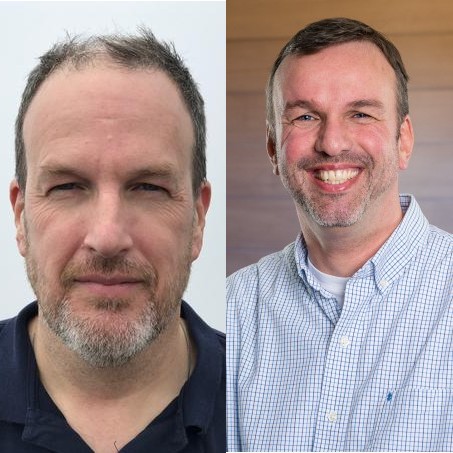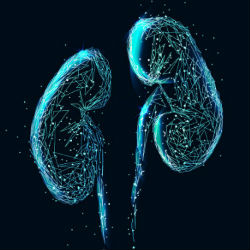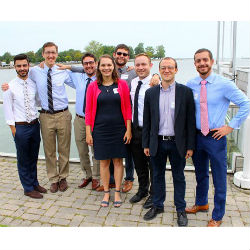TBS Graduate Student Receives Young Investigator Award
Elizabeth “Libby” Saionz, a student in the CTSI’s Translational Biomedical Sciences (TBS) Graduate Program, recently received a Young Investigator Award for best student talk at the Optical Society of America's Fall Vision Meeting. Saionz presented her work showing that starting visual training sooner rather than later can help stroke patients regain more vision and do so more quickly.
Saionz, who is also in the Medical Scientist Training Program at the University of Rochester Medical Center, presented her research conducted under Krystel Huxlin, Ph.D., associate chair for Research and James V. Aquavella, MD Professor of Ophthalmology in the Flaum Eye Institute at URMC.
“I am very proud of Libby,” said Huxlin. “She certainly deserved this award against excellent national and international competition.”
Huxlin and members of her lab aim to understand how, and to what extent vision can recover from brain injuries such as stroke. Vision loss is common among stroke patients and Huxlin’s lab is one of the few teams worldwide to develop rigorous, computer-based visual training to help stroke patients regain vision.
While physical therapy has long been used to help patients regain mobility after stroke, no therapy has been available to help stroke patients regain vision. In fact, for a long time, vision was considered unrecoverable after a stroke. Now, much like physical therapy, Saionz and Huxlin have found that the sooner after stroke a patient can start visual training in their blind field, the better.
Saionz’s award-winning talk focused on how the timing of visual training after a stroke can have a big impact on the quantity and quality of vision regained by patients. Though patients spontaneously regained rudimentary aspects of vision, like the ability to detect light, in the first months after stroke, visual training was key to recovering finer and more complex vision.
Patients who started visual training less than three months after stroke regained complex aspects of vision much faster and farther into their blind areas than patients who started training more than six months after suffering a stroke.
The personalized visual training, which patients performed at home on their computers, flashed small patches of moving dots in the blind areas of their visual field. Patients had to guess the direction in which the dots moved. At first, guessing was all they could do, but over time, they began to reliably detect the correct direction of motion.
Saionz found that it took early trainers an average of 11 training sessions to regain the ability to determine direction of motion at a given training location. Late trainers, on the other hand, needed 99 training sessions on average to attain the same vision recovery.
The moral of Saionz’s research? When it comes to visual training after stroke, the earlier the better – “time is vision”!
###
The project described above was supported by the PhD Program in Translational Biomedical Sciences under the University of Rochester CTSA award numbers TL1TR000096 and TL1TR002000 from the National Center for Advancing Translational Sciences of the National Institutes of Health. The PhD Program in Translational Biomedical Sciences provides in-depth mentoring and multi-disciplinary training to lay the foundation for a career dedicated to the translation of basic biomedical research into improved health.
Michael Hazard | 10/19/2017



